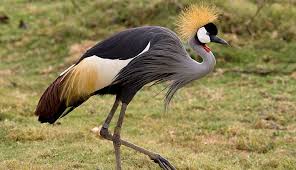Stamp: Crane, surcharged (Armenia 1923)
Crane, surcharged (Armenia 1923)
01 May (Armenia ) within release Local Motifs (IV) goes into circulation Stamp Crane, surcharged face value 25,000 Armenian ruble
| Stamp Crane, surcharged in catalogues | |
|---|---|
| Michel: | Mi: AM 184 |
Stamp is square format.
Black, violet or red surcharge Type II: initial digit is bigger than zerosAlso in the issue Local Motifs (IV):
- Stamp - Star, Hammer and Sickle, surcharged face value 100,000;
- Stamp - Crane, surcharged face value 25,000;
- Stamp - Ox-driver on the fields, surcharged face value 500,000;
- Stamp - Mythical Beast and Soviet Star, surcharged face value 200,000;
- Stamp - Ox-driver on the fields, surcharged face value 500,000;
- Stamp - Mythical Beast and Soviet Star, surcharged face value 200,000;
- Stamp - Soviet badge, surcharged face value 25,000;
- Stamp - Star, Hammer and Sickle, surcharged face value 10,000;
- Stamp - Harpy, surcharged face value 100,000;
- Stamp - Peasant and Worker, surcharged face value 300,000;
- Stamp - Harpy, surcharged face value 100,000;
- Stamp - Soviet badge, surcharged face value 25,000;
- Stamp - Mount Ararat, surcharged face value 15,000;
- Stamp - Peasant, surcharged face value 50,000;
- Stamp - Mount Ararat, surcharged face value 15,000;
- Stamp - Sower, surcharged face value 75,000;
- Stamp - Peasant, surcharged face value 50,000;
Stamp Crane, surcharged it reflects the thematic directions:
Animals are multicellular, eukaryotic organisms of the kingdom Animalia (also called Metazoa). All animals are motile, meaning they can move spontaneously and independently, at some point in their lives. Their body plan eventually becomes fixed as they develop, although some undergo a process of metamorphosis later on in their lives. All animals are heterotrophs: they must ingest other organisms or their products for sustenance.
Birds (Aves), a subgroup of Reptiles, are the last living examples of Dinosaurs. They are a group of endothermic vertebrates, characterised by feathers, toothless beaked jaws, the laying of hard-shelled eggs, a high metabolic rate, a four-chambered heart, and a strong yet lightweight skeleton. Birds live worldwide and range in size from the 5 cm (2 in) bee hummingbird to the 2.75 m (9 ft) ostrich. They rank as the class of tetrapods with the most living species, at approximately ten thousand, with more than half of these being passerines, sometimes known as perching birds. Birds are the closest living relatives of crocodilians.
Cranes are a type of large bird with long legs and necks in the biological family Gruidae of the order Gruiformes. The family has 15 species placed in four genera which are Antigone, Balearica, Leucogeranus, and Grus. They are large birds with long necks and legs, a tapering form, and long secondary feathers on the wing that project over the tail. Most species have muted gray or white plumages, marked with black, and red bare patches on the face, but the crowned cranes of the genus Balearica have vibrantly-coloured wings and golden "crowns" of feathers. Cranes fly with their necks extended outwards instead of bent into an S-shape and their long legs outstretched.
A star is a luminous spheroid of plasma held together by self-gravity. The nearest star to Earth is the Sun. Many other stars are visible to the naked eye at night; their immense distances from Earth make them appear as fixed points of light. The most prominent stars have been categorised into constellations and asterisms, and many of the brightest stars have proper names. Astronomers have assembled star catalogues that identify the known stars and provide standardized stellar designations. The observable universe contains an estimated 1022 to 1024 stars. Only about 4,000 of these stars are visible to the naked eye—all within the Milky Way galaxy.




